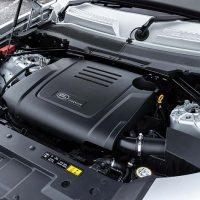Story by Jordan Allan, photos courtesy of FCA Canada

Diesel engines are known for their low-end torque and this is perhaps the perfect complement to the already incredibly off-road proficient Wrangler, as it allows it to provide power very quickly to the wheels, something that comes in handy when say, climbing a steep, rocky mountain face. Rated at 260 horsepower and 442 lb-ft. of torque, the EcoDiesel engine is paired to an 8-speed automatic transmission and this combination not only performs admirably off-road, but improves the Wrangler’s on-road characteristics as well.

Fuel numbers come in at 8.1L/100 km on the highway and 10.7L/100 km in the city which certainly bests the V6 Pentastar, but also somewhat surprisingly beats the 2.0L turbo option that comes in at 10.9L/100 km city and 10.1L/100km on the highway.
The engine is fairly quiet which is probably something most people prefer, but part of me was hoping it would sound somewhat closer to a ’90s Cummins-powered Dodge Ram and less of a Volkswagen TDI, but it was definitely closer to the latter. That being said, there are still noises emitted that are unmistakably diesel and add to the overall experience of driving a Wrangler, which is something unlike almost anything else.

The diesel engine option adds nearly 425 lbs. of overall weight but, due to the very substantial torque increase (180 lb-ft over V6, 147 lb-ft over turbo), it was not noticeable at all. As expected, the Wrangler took on steep climbs with ease, performed admirably as expected in all other terrain and remains the most off-road capable factory vehicle available today.
To me, the EcoDiesel is the engine of choice for the Wrangler as it pairs well with what the Wrangler is good at, which leaves only one question – is it worth it financially? The EcoDiesel engine is a $9,190 option which is $9,190 more than the V6 Pentastar (sans eTorque) and $7,195 more than the turbocharged four, certainly a substantial difference. Making that back at the pump will take a long time and a lot of math, so the question of value can really only be answered through one’s personal preferences. To some, this increased capability and improved efficiency would be well worth the nearly 10 grand, and to others it wouldn’t be.
I’m not in a place to say what truly represents the better value to each individual buyer, but I will say I’ll most definitely have a stronger preference for diesel-powered Wranglers moving forward, as it only adds to an already cool and capable vehicle.































